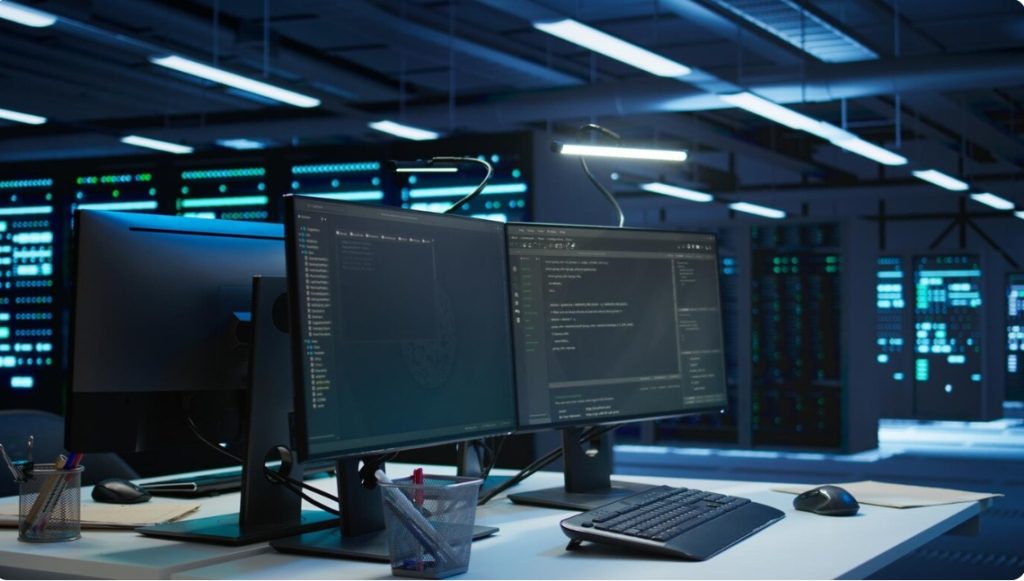Are you preparing for exams or interviews and looking for a reliable way to test your understanding of operating systems? This comprehensive set of MCQ for Operating System topics is designed to help you do just that. Covering key concepts like process management, memory allocation, scheduling algorithms, virtual memory, deadlocks, and file systems, these multiple-choice questions provide both beginners and advanced learners with a solid revision tool. Whether you’re a computer science student or IT professional, these MCQs will help reinforce your knowledge and prepare you for real-world questions commonly asked in technical exams and competitive assessments.
60 MCQ for operating system

- Which of the following is not a type of operating system?
A. Batch Operating System
B. Time-Sharing Operating System
C. Multiprocessing Operating System
D. Java Virtual Machine
Answer: D. Java Virtual Machine
- The part of the OS that manages hardware is called:
A. File System
B. Kernel
C. Shell
D. Command Line
Answer: B. Kernel
- Which scheduling algorithm assigns the CPU to the process that requests it first?
A. SJF
B. FCFS
C. Round Robin
D. Priority Scheduling
Answer: B. FCFS
- In Round Robin scheduling, the time quantum is:
A. Infinite
B. Variable and increasing
C. Fixed
D. Random
Answer: C. Fixed
- What causes a deadlock in an operating system?
A. Resource sharing
B. Limited memory
C. Mutual exclusion and circular wait
D. High CPU usage
Answer: C. Mutual exclusion and circular wait
- Which of the following is a non-preemptive scheduling algorithm?
A. Round Robin
B. FCFS
C. SJF (Preemptive)
D. Multilevel Queue
Answer: B. FCFS
- What does the term ‘thrashing’ refer to in memory management?
A. Using the CPU excessively
B. Overuse of cache memory
C. Excessive paging
D. Swapping out the kernel
Answer: C. Excessive paging
- Virtual memory allows:
A. Running programs without RAM
B. Increased physical memory
C. Execution of programs larger than RAM
D. Faster disk operations
Answer: C. Execution of programs larger than RAM
- The process control block (PCB) does not contain:
A. Program counter
B. CPU registers
C. Page table
D. User password
Answer: D. User password
- A semaphore is used to:
A. Manage files
B. Handle input/output
C. Synchronize processes
D. Allocate CPU time
Answer: C. Synchronize processes
- What is a system call?
A. Call to BIOS
B. Call to the kernel for service
C. Compiler call
D. Memory management function
Answer: B. Call to the kernel for service
- Which scheduling algorithm gives minimum average waiting time?
A. FCFS
B. Round Robin
C. SJF
D. Priority
Answer: C. SJF
- Context switching occurs when:
A process terminates
B. A process blocks
C. CPU switches from one process to another
D. Memory is deallocated
Answer: C. CPU switches from one process to another
- Which of the following is responsible for loading the operating system into memory?
A. Scheduler
B. Loader
C. Bootstrap
D. Shell
Answer: C. Bootstrap
- Which is not a valid state of a process?
A. New
B. Running
C. Ready
D. Compiled
Answer: D. Compiled
- A page fault occurs when:
A. Page is in memory
B. Page is on disk
C. CPU switches process
D. Process is suspended
Answer: B. Page is on disk
- Which of the following uses the shortest job first policy?
A. Interactive systems
B. Real-time systems
C. Batch systems
D. Multitasking systems
Answer: C. Batch systems
- What is the role of the scheduler?
A. Manage RAM
B. Convert files
C. Allocate CPU to processes
D. Format disks
Answer: C. Allocate CPU to processes
- The main function of the command interpreter is to:
A. Allocate memory
B. Execute files directly
C. Provide interface for user commands
D. Manage disks
Answer: C. Provide interface for user commands
- Which is not true about virtual memory?
A. Increases logical address space
B. Reduces memory fragmentation
C. Needs demand paging
D. Requires compiler support
Answer: D. Requires compiler support
- Which of the following is used to track the status of processes?
A. I/O table
B. Ready queue
C. PCB (Process Control Block)
D. File descriptor
Answer: C. PCB (Process Control Block)
- In a paged memory system, the page table is used to:
A. Allocate CPU to a process
B. Map virtual addresses to physical addresses
C. Convert files into memory pages
D. Swap processes
Answer: B. Map virtual addresses to physical addresses
- The time taken to switch from one process to another is known as:
A. Delay time
B. Switching time
C. Context switch time
D. Overhead time
Answer: C. Context switch time
- What is starvation in operating systems?
A. Process completes execution
B. Process is waiting indefinitely for a resource
C. CPU is idle
D. No memory allocated to a process
Answer: B. Process is waiting indefinitely for a resource
- Which one of the following is not an example of a system call?
A. fork()
B. exec()
C. printf()
D. exit()
Answer: C. printf()
- What kind of scheduler selects processes from the job pool?
A. Long-term scheduler
B. Short-term scheduler
C. Medium-term scheduler
D. Context scheduler
Answer: A. Long-term scheduler
- In the Banker’s Algorithm, what does the ‘Need’ matrix represent?
A. Available resources
B. Current allocation
C. Maximum demand minus allocation
D. Unused memory
Answer: C. Maximum demand minus allocation
- Which memory allocation technique suffers from internal fragmentation?
A. Paging
B. Segmentation
C. Swapping
D. Stack allocation
Answer: A. Paging
- In a multiprogramming environment, the processor is switched among multiple tasks. This is called:
A. Pipelining
B. Multithreading
C. Context switching
D. Segmentation
Answer: C. Context switching
- What is the size of a typical page in paging?
A. 8 KB to 64 KB
B. 1 MB
C. 1 GB
D. 512 Bytes
Answer: A. 8 KB to 64 KB
- An operating system that allows multiple users to access a computer system at the same time is called:
A. Batch OS
B. Multi-user OS
C. Real-time OS
D. Multiprocessing OS
Answer: B. Multi-user OS
- The LRU page replacement algorithm replaces:
A. The most recently used page
B. The least recently used page
C. A random page
D. The oldest page
Answer: B. The least recently used page
- Which of the following is responsible for managing files in an operating system?
A. Scheduler
B. Loader
C. File System
D. Interpreter
Answer: C. File System
- What is the default mode for a process execution in most systems?
A. Kernel mode
B. Root mode
C. User mode
D. Supervisor mode
Answer: C. User mode
- Which one is not an advantage of multiprogramming?
A. Increased CPU utilization
B. Increased throughput
C. Faster execution
D. Better memory management
Answer: C. Faster execution
- Which command is used to check memory usage in Unix/Linux?
A. du
B. mem
C. free
D. checkmem
Answer: C. free
- A signal in OS is:
A kind of system call
B. A hardware interrupt
C. A software interrupt
D. A user-level request
Answer: C. A software interrupt
- What is the main purpose of the shell in an operating system?
A. Manage the CPU
B. Handle interrupts
C. Provide command line interface
D. Encrypt files
Answer: C. Provide command line interface
- Swapping is a process of:
A. Moving pages in memory
B. Moving processes between memory and disk
C. Allocating virtual memory
D. CPU scheduling
Answer: B. Moving processes between memory and disk
- Which file system is used in most Linux distributions?
A. FAT32
B. NTFS
C. ext4
D. exFAT
Answer: C. ext4
- Which technique is used to remove deadlocks?
A. Interrupt handling
B. Disk scheduling
C. Resource preemption
D. CPU reservation
Answer: C. Resource preemption
- Which of the following is an example of a preemptive scheduling algorithm?
A. FCFS
B. Round Robin
C. SJF (non-preemptive)
D. Priority (non-preemptive)
Answer: B. Round Robin
- Which component keeps track of the status of each resource?
A. File descriptor
B. Resource allocation graph
C. Semaphore
D. Page table
Answer: B. Resource allocation graph
- The main function of paging is to:
A. Reduce disk space
B. Speed up CPU
C. Break memory into fixed-size blocks
D. Protect kernel memory
Answer: C. Break memory into fixed-size blocks
- A system is in a safe state if:
A. It has no deadlocks
B. It can allocate resources to every process in some order
C. All processes are terminated
D. Memory is full
Answer: B. It can allocate resources to every process in some order
- Which of the following is not a CPU scheduling criterion?
A. Throughput
B. Turnaround time
C. Waiting time
D. Instruction count
Answer: D. Instruction count
- The operating system that responds to input instantly is known as:
A. Batch system
B. Time-sharing system
C. Real-time system
D. Distributed system
Answer: C. Real-time system
- FIFO page replacement suffers from:
A. Belady’s anomaly
B. Thrashing
C. Starvation
D. Paging loss
Answer: A. Belady’s anomaly
- The degree of multiprogramming is:
A. Number of CPUs
B. Number of I/O requests
C. Number of processes in memory
D. Size of memory
Answer: C. Number of processes in memory
- Which of the following is used for inter-process communication?
A. Signals
B. Semaphores
C. Shared memory
D. All of the above
Answer: D. All of the above
- The method by which user programs communicate with the operating system is:
A. Signal handling
B. System calls
C. Input functions
D. Threading
Answer: B. System calls
- Which of the following is a function of an operating system?
A. Spreadsheet calculation
B. Internet browsing
C. Resource management
D. Word processing
Answer: C. Resource management
- A thread is:
A. A separate program
B. A unit of process
C. Hardware part
D. A full process
Answer: B. A unit of process
- Which is the fastest inter-process communication method?
A. Message passing
B. Shared memory
C. Signals
D. Pipes
Answer: B. Shared memory
- Which process state means it is waiting to be assigned to a processor?
A. Ready
B. Running
C. Blocked
D. Terminated
Answer: A. Ready
- What is the objective of job scheduling?
A. Reduce memory usage
B. Maximize CPU use
C. Format files
D. Reduce disk access
Answer: B. Maximize CPU use
- Demand paging:
A. Loads all pages at once
B. Loads pages only when needed
C. Does not allow page faults
D. Uses magnetic tape
Answer: B. Loads pages only when needed
- Which memory allocation technique can cause external fragmentation?
A. Segmentation
B. Paging
C. Virtual memory
D. Cache mapping
Answer: A. Segmentation
- Which of the following does not use a queue structure?
A. FCFS
B. Round Robin
C. Priority Scheduling
D. Multilevel Scheduling
Answer: C. Priority Scheduling
- What is the main role of the dispatcher?
A. Handle interrupts
B. Assign jobs to printer
C. Give control of CPU to the process selected by the scheduler
D. Kill idle processes
Answer: C. Give control of CPU to the process selected by the scheduler
Wrapping Up
To sum up, this collection of MCQ for Operating System provides a solid foundation for anyone aiming to strengthen their understanding of core OS concepts. Whether you’re studying for academic exams, preparing for technical interviews, or simply reviewing important topics, these multiple-choice questions offer a practical way to test and reinforce your knowledge. Covering everything from process management and scheduling to memory handling and file systems, these questions are designed to reflect real-world scenarios. Keep practicing regularly, and you’ll build both confidence and competence in operating system fundamentals. Don’t forget to revisit tricky areas for better long-term retention and success.





